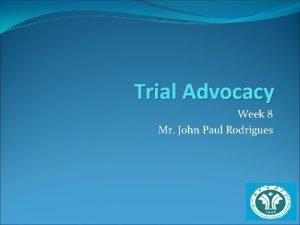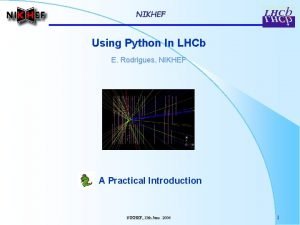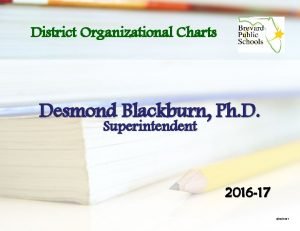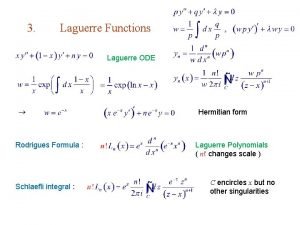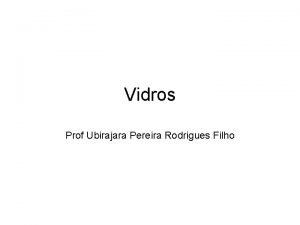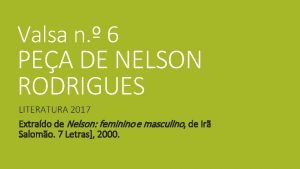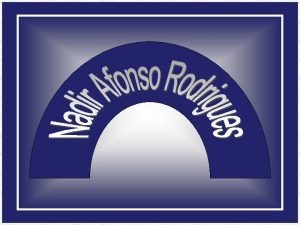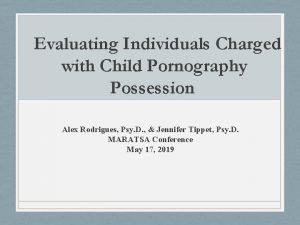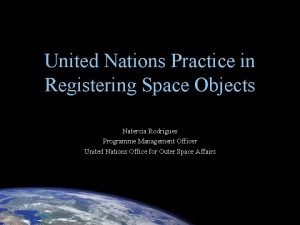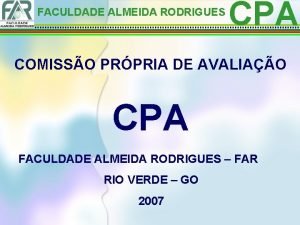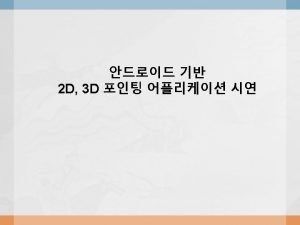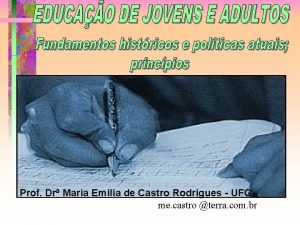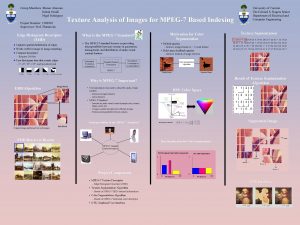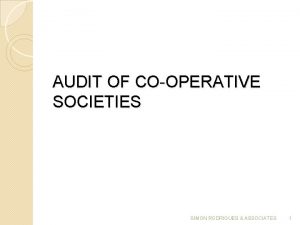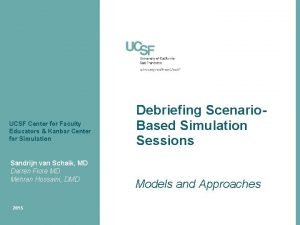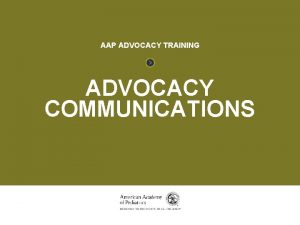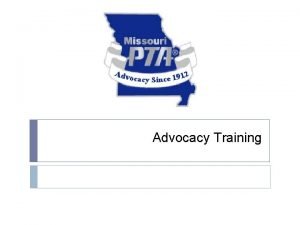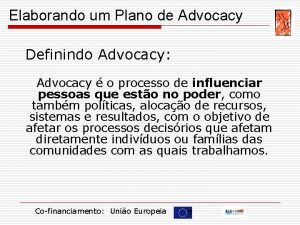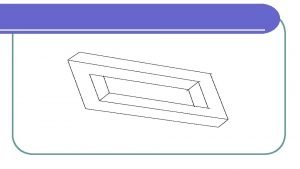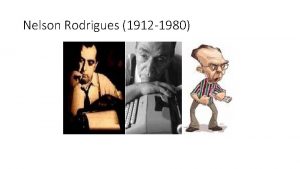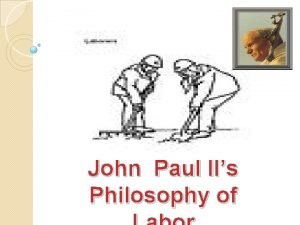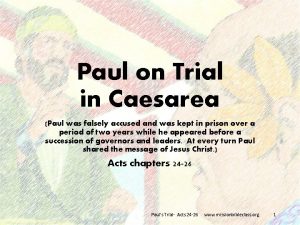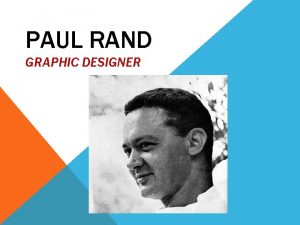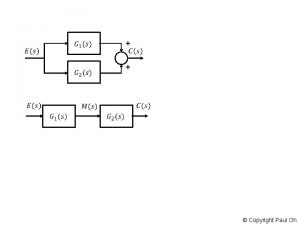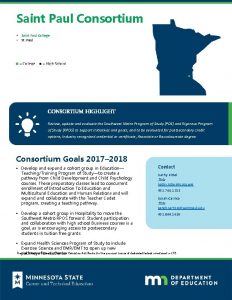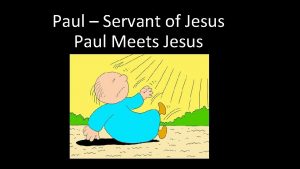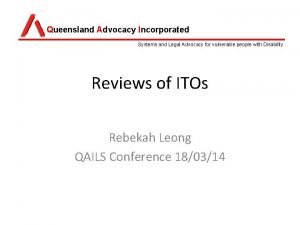Trial Advocacy Week 8 Mr John Paul Rodrigues





















- Slides: 21

Trial Advocacy Week 8 Mr. John Paul Rodrigues

Objective Teaching and learning involves teachers and students working together. I would like to discuss with you, encourage and inspire you to improve your oral and written legal dialogue as well as your English skills.

About Me I graduated from Osgoode Hall Law School in Toronto, Canada and received my Juris Doctor (JD) degree in June and have passed the Ontario Bar Examinations. I also have a Business Degree (BA) from the University of Waterloo in Canada. I enjoy listening to music and sports. I am learning to play badminton and table tennis. I have been in Chongqing for just over a year now and would like to improve my Chinese.

Contact Information Telephone: 18223009677 E-mail: jrod 023@gmail. com QQ: 1265770944 Course Website: http: //www. ya-boy. com/swupl Please feel free to e-mail me your questions and comments about the course materials (and beyond). Please put “International Tort Law” in the “Re” line of your e-mail. I will collect your questions and comments during the week and address them in class every Monday because such dialogue in the classroom will benefit the whole group.

Teaching Method This course will be taught through lectures and discussion. Students are expected to attend class regularly, prepare for lectures and participate in discussion. This course is intended to introduce students to the most basic trial advocacy skills and to engage in a discussion of these ideas. Each class will consist of a 45 minute discussion period, followed by a 45 minute lecture to introduce the material for next week.

Evaluation The method of evaluation will consist of the following: 50% - Written & Oral Participation in Class Discussion 50% - Final Exam/Project (Due: November 29 th, 2010)

Class Schedule Oct. 18 th: Week 8 – Introduction Oct. 25 th: Week 9 – Opening Statements Nov 1 st: Week 10 – Direct Examination Nov. 8 th: Week 11 – Cross-Examination Nov. 15 th: Week 12 – Closing Statements Nov. 22 nd: Week 13 – Final Trials – Week I Nov. 29 th: Week 14 – Final Trials – Week II

Introduction to Trial Advocacy The word “tort” derives from the old French equivalent for “wrong. ” At each time of the day, people suffer a variety of “wrongs”, either to their person or dignity or property or wealth but tort law does nor concern itself with the manifold variety of perceived “wrongs. ” Rather, it concerns itself only with “ a civil wrong, other than a breach of contract, which the law will redress by an award of damages” (Fleming, 9 th ed. , at 1)

Basic Rules 1. Act very respectful toward the judge. Stand when he/she enters or leaves the room. Address him/her as "your honor. " 2. Treat your opposing counsel with respect. Never underestimate your opponent! 3. Don't whine or complain! 4. Wear comfortable clothes, especially shoes. 5. Be short and concise and speak clearly!

Basic Rules 6. Bring water and some light snacks. 7. Arrive at every court appearance at least 15 minutes early. 8. Relax!!! 9. Be formal and professional at all times. 10. Prepare

Preliminaries Bailiff calls court to order, attorneys stand judge enters room. Judge asks for attorneys' names (sometimes called "appearances"); attorneys give their names and whom they represent. Judge asks if there any preliminary issues and attorneys make motions. Plaintiff usually goes first. Motions are of three kinds: a) Motion to separate witnesses under Fed. R. Evid 615 b) Motions in limine to prevent the other side from bringing up inadmissible evidence c) Requests that the judge clarify his or her procedures on specific issues; e, g, i) May exhibits be used in opening statement?

Jury Selection A jury panel is brought in. The judge introduces the case and lectures the jury about civic responsibility. Six jurors are called to sit in the jury box Plaintiff questions the panel first, and when done, then defendant questions them. Either side may challenge a juror for cause (legal disqualification) whenever grounds become apparent After the questioning, the lawyers approach the bench and tell the judge whether they have any peremptory challenges (you just don't like a juror). Plaintiff exercises the first challenge, then defendant, then alternately until they are satisfied with the panel or run out of allotted challenges.

Jury Selection You may not challenge jurors based on race, ethnicity or gender. New jurors are called up to fill in the jury box and the process starts over again. The jurors who remain are sworn in

Opening Statement Plaintiff (or prosecutor) gives an opening statement Defendant gives an opening statement.

Plaintiff’s Examination in Chief Plaintiff calls Witness No. 1. Plaintiff conducts direct examination. Defendant conducts cross-examination. Plaintiff conducts brief rebuttal This process repeats for each additional witness. Plaintiff can use this time to introduce evidence such as diagrams, DNA, pertaining to a specific witness. (ie: bloody gloves from OJ Simpson trial) Plaintiff rests.

Defence’s Examination in Chief Defence calls Witness No. 1. Defence conducts direct examination. Plaintiff conducts cross-examination. Defence conducts brief rebuttal This process repeats for each additional witness. Defence can use this time to introduce evidence such as diagrams, DNA, pertaining to a specific witness. (ie: bloody gloves from OJ Simpson trial)

Plaintiff’s Rebuttal Plaintiff calls one or more witnesses a) Plaintiff conducts direct examination b) Defendant conducts cross-examination c) Plaintiff conducts brief rebuttal Plaintiff announces that s/he rests. Only limited to new facts, issues and defenses raised during the defendant's case-in-chief.

Closing Arguments Plaintiff presents the first argument Defendant presents his or her argument Plaintiff presents the final argument

Judgment Judge instructs to jury on the law The jury deliberates in secret. If the jury requests more instructions or a review of evidence, it takes place in open court with the parties present. Even the judge may not communicate ex parte with the jury. The jury returns its verdict, the lawyers are summoned, and the verdict is read. Whichever lawyer lost the case asks that the jury be "polled, " a process in which each juror is individually asked if they agree with the verdict.

The Rainmaker Questions Who wrote the novel, “The Rainmaker? ” What actor plays the character, Deck Shifflett? What does “Rainmaker” mean in the legal world? In one paragraph, describe the character of Rudy Baylor. In one paragraph, describe the character of Bruiser Stone. In one paragraph, describe the main themes of the movie. Do you agree with the ruling in the final case? Why? Do you think that Kelly or Rudy should have been prosecuted for the death of Kelly’s husband? Why or why not? Did you like this movie? Why or why not? How do you think this film relates to the study of trial advocacy ?

Homework for Next Class Finish answering the questions about The Rainmaker
 John paul rodrigues
John paul rodrigues Week by week plans for documenting children's development
Week by week plans for documenting children's development Tumulo de amalia rodrigues
Tumulo de amalia rodrigues Python rodrigues
Python rodrigues Dr desmond blackburn
Dr desmond blackburn Rodrigues formula definition
Rodrigues formula definition Ubirajara pereira rodrigues filho
Ubirajara pereira rodrigues filho Monólogo exemplos
Monólogo exemplos Nadir afonso rodrigues
Nadir afonso rodrigues Amanestic
Amanestic Dr natercia rodrigues
Dr natercia rodrigues Antonio rodrigues de freitas junior
Antonio rodrigues de freitas junior Nerival rodrigues festa junina
Nerival rodrigues festa junina Faculdade almeida rodrigues
Faculdade almeida rodrigues Rodrigues' rotation formula
Rodrigues' rotation formula Amlia rodrigues
Amlia rodrigues Maria emília ufg
Maria emília ufg Camila rodrigues roberto costa
Camila rodrigues roberto costa Babak omidi
Babak omidi Quem era eu luana rodrigues
Quem era eu luana rodrigues Simon rodrigues and associates
Simon rodrigues and associates Ucsf kanbar center
Ucsf kanbar center
